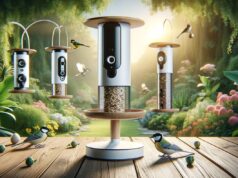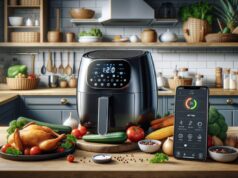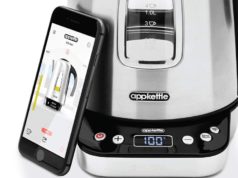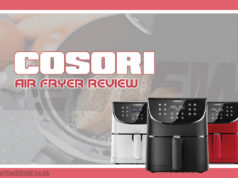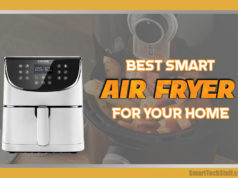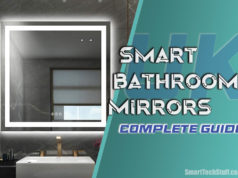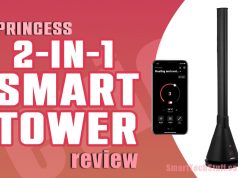With the summer getting hotter, hayfever season here, and air impurities on the rise, finding a way to keep the air in your home clean and healthy is getting harder than ever.
This is why more people are turning to air purifiers to keep the air in their homes free of things like dust, smoke, pet dander, and other issues. This guide will go through everything you need to know about smart air purifiers, including how they work, whether they are right for you, and the best ones to buy in 2025.

- Room size: 100 square meters
- Noise Level: 22 decibels
- What it filters: HEPA H13, Activated Carbon, UV light sterilization
- Smart features: Real-time air quality monitoring, auto mode, filter replacement reminder

- Room size: 100m²
- Noise Level: 25 dB
- What it filters: Dust, pollen, pet dander, allergens.
- Smart features: App, Alexa voice control, scheduling.

- Room size: 109 m²
- Noise Level: Low on eco setting
- What it filters: Allergens, bacteria, animal hair, fine dust, mites, mould, odours, pollen, viruses
- Smart features: App-enabled, compatible with Alexa, real-time monitoring, auto and eco modes, filter indicator

- Room size: 52m²
- Noise Level: 23 dB
- What it filters: Pollen, dust, smoke, pet hair, odours
- Smart features: App control, voice command compatibility

- Room size: up to 78 m²
- Noise Level: 50 dB
- What it filters: Pollen, Allergies, Dust, Smoke
- Smart features: Wi-Fi Connectivity, Air+ App

- Room size: 44m2 coverage
- Noise Level: 19 dB
- What it filters: HEPA filter removes 99.97% of pollutants
- Smart features: App controls, Alexa and Google Home compatible

- Room size: up to 48 square meters
- Noise Level: as low as 18 dB on low fan speed
- What it filters: removes 99.97% of particles down to 0.1 microns
- Smart features: Blueair app connectivity, RealTrack filter tracking, voice control

- Room size: up to 44m²
- Noise Level: as low as 19 dB in sleep mode
- What it filters: PM2.5, pollen, pet dander, pollutants
- Smart features: Air quality feedback, app control

- Room size: 20 m² in less than 16 min
- Noise Level: 31 dB
- What it filters: Pollen, dust, dust mites, pet dander, smog, gases
- Smart features: Air+ app connectivity, real-time air quality display

- Room size: up to 35 m²
- Noise Level: 23 dB
- What it filters: PM2.5, pollen, dust, pet dander
- Smart features: Alexa and Google Assistant compatibility, VeSync App control
The best air purifiers for your home in 2025

Conopu Air Purifier For Bedroom Home up to 100?
Sturdy and efficient in design, ideal for allergy sufferers and those seeking a tranquil home environment, the CONOPU Smart Air Purifier ensures breathable, pristine air quality.
Prices checked: 18th November, 01:14:14
What we liked:
The efficient HEPA H13 filter effortlessly removes particles as small as 0.3 microns, offering comprehensive purification for dander, dust, smoke fumes, and pollen. The real-time air quality indicator provides visual feedback, making it easy for users to track air quality with a simple color-coded system. Moreover, the ultra-silent performance at 22dB creates a peaceful environment, especially during sleep.
What we didn't like:
However, the air purifier has limitations in air quality monitoring, particularly in areas with high traffic, and some users have noted noticeable noise levels in non-sleep mode, impacting the overall user experience in certain environments.
How does it compare to similar air purifiers?
Compared to similar products, the CONOPU Air Purifier excels in its compact design, efficient filtration system, and real-time air quality monitoring. However, it could benefit from enhancements in air quality monitoring and noise levels for a more comprehensive user experience.
Verdict: Is it worth a buy?
The CONOPU Air Purifier offers efficient and effective air purification, making it an ideal choice for those seeking clean and healthy air in their homes. With its compact design and user-friendly features, it is suitable for anyone looking to improve the air quality in their living spaces.
- Efficient HEPA H13 Filter: Captures 99.97% of particles as small as 0.3 microns, including allergens and smoke.
- Real-time Air Quality Indicator: Offers immediate visual feedback with a colour-coded system for easy monitoring.
- Ultra-silent Performance: At a quiet 22dB, it provides a disturbance-free environment.
- Energy-efficient: Utilises minimal energy with an intelligent auto mode for fan speed adjustment.
- User-friendly Filter Replacement: Features a simple one-hand operation and timely reminders for filter changes.
- Ineffective Monitoring in High Traffic Areas: Struggles to detect poor air quality in busy spaces.
- Limited Sleep Mode Functionality: Lacks a light-activated sleep mode for enhanced usability.

Smart Wi-Fi Air Purifier
Sturdy, high-performance FRESHDEW air purifier with smart controls, perfect for large rooms, offering superior air quality for health-conscious homeowners.
Prices checked: 18th November, 01:14:14
What we liked:
The Smart Air Purifier impresses with its compact size, high-quality build, and effective air filtration. Despite its small footprint, it efficiently purifies the air in the room, making it suitable for various living spaces. The use of top-quality materials ensures durability, and the HEPA filter effectively removes minute particles, benefiting those with allergies. The smart control options, including the companion app and Alexa integration, provide convenient and flexible operation, enhancing the overall user experience.
What we didn't like:
However, the air purifier's higher price compared to more established brands might affect its overall value proposition. Additionally, noise levels at higher fan speeds could be a concern for some users. The automation features are somewhat limited in functionality, especially when linked to external factors like weather, and the high-pitched noise in sleep mode may impact its usability for some individuals. The effectiveness of the built-in PM2.5 sensor may also be limited in cleaner environments, affecting its automatic control.
How does it compare to similar air purifiers?
Compared to other smart air purifiers in the market, the Smart Air Purifier stands out with its compact size, smart control options, and effective air filtration. However, its higher price and noise levels at higher fan speeds may pose concerns for some users. The flexible scheduling and smart control options make it a solid choice for those seeking efficient air purification.
Verdict: Is it worth a buy?
The Smart Air Purifier offers compact and high-quality air purification with effective filtration for various living spaces. Despite its higher price and noise levels at higher fan speeds, its smart control options and flexible scheduling make it a solid choice for those seeking efficient air purification.
- Compact design: Its space-efficient build allows for placement in any room without taking up much space.
- Durable construction: Made with premium materials, promising longevity and reliability.
- Intelligent controls: Features like app integration and Alexa compatibility offer user-friendly operation.
- Advanced filtration: The HEPA filter and 4-stage filtration system provide exceptional air cleaning capabilities.
- Flexible programming: Users can easily schedule operations through the app, enhancing convenience.
- Cost consideration: Its premium price may be a hurdle for those with a tight budget.
- Noise factor: Can be loud on higher settings, which might disturb users seeking a quiet environment.
- Automation limits: Some of the automatic features are not as robust as those of competitors.

Coway Airmega AP-1512HHS App-Enabled Smart Technology
Sturdy, reliable, and technologically advanced for users seeking purified air. The Coway Airmega is ideal for allergy sufferers and tech-savvy homes.
Prices checked: 18th November, 01:14:14
The air purifier effectively responds to changes in air quality, ensuring efficient air purification. Its washable pre-filter and easy filter replacement make maintenance hassle-free, while the sleek and elegant design adds a touch of sophistication to any room. Additionally, the Coway brand is trusted for its reliable and reputable air purifiers, making it a worthwhile investment for long-term benefits.
What we liked:
The Coway Airmega AP-1512HHS Smart Air Purifier excels in reducing allergy symptoms, offers smart filter replacement indicators, and boasts an excellent air quality sensor. Its quiet operation on lower settings and easy maintenance make it a valuable addition to any space.
What we didn't like:
However, the air purifier does produce a noticeable whistling noise at high speeds, and the filter installation instructions can be confusing. The inconsistency in air quality lights and limited information in the manual also detract from its overall performance.
How does it compare to similar air purifiers?
Compared to similar air purifiers, the Coway Airmega AP-1512HHS offers efficient air purification but may have some drawbacks in terms of noise and clarity of instructions. Potential buyers should consider these factors before making a purchase decision.
Verdict: Is it worth a buy?
The Coway Airmega AP-1512HHS Smart Air Purifier provides an excellent solution for reducing allergy symptoms and ensuring clean air quality. Despite some drawbacks, it is a valuable investment for those seeking long-term air purification benefits.
- Alleviates allergies: Dramatically reduces symptoms, particularly from pets and mould.
- Filter replacement indicator: Smart feature for timely maintenance.
- Responsive air quality sensor: Ensures efficient air purification.
- Quiet operation: Ideal for undisturbed use, especially on lower settings.
- Contaminant removal: Quickly eliminates smoke, dust, and other pollutants.
- Noisy on high speed: Whistling noise can be intrusive at maximum settings.
- Unclear instructions: Filter installation can be confusing due to poor guidance.
- Inconsistent interface: Air quality lights differ from other models causing confusion.

Levoit Smart Air Purifiers
Sturdy, efficient, and tailored for modern homes, ideal for enhancing the air quality in large spaces with smart connectivity for seamless operation.
Check Latest PriceWhat we liked:
The LEVOIT Smart Air Purifier impresses with its efficient and quiet operation, effectively improving sleep and providing easy setup and control. Users appreciate its effective odor removal, allergen control, and smart functionality.
What we didn't like:
However, some may find the reliance on the app and limited physical controls a drawback, along with the absence of a remote and the price point.
How does it compare to similar Air Purifiers?
Compared to similar air purifiers, the LEVOIT Smart Air Purifier excels in its efficient operation, large coverage, and smart functionality. However, some users may find the limited physical controls and app dependency less appealing.
Verdict: Is it worth a buy?
The LEVOIT Smart Air Purifier is an excellent choice for those looking for an efficient, quiet, and stylish air purification solution. It is ideal for individuals seeking improved sleep quality, effective odor removal, and allergen control in larger spaces.
- Efficient and quiet: The centrifugal fan and smart technology provide air purification without disruption.
- Improved sleep: Silent night mode contributes to better sleep quality with cleaner air.
- Easy setup and use: Intuitive controls via the app or panel enable simple operation.
- Effective odor removal: Activated-Carbon filter rapidly neutralises unpleasant smells.
- Allergen control: The HEPA filter effectively eliminates common airborne allergens.
- Limited physical controls: Some users may miss having more manual options.
- No remote: The lack of a remote control can be inconvenient for certain users.
- App dependency: Sole reliance on app operation may not be suitable for everyone.

Philips Air Purifier Smart 1000i Series
Sturdy, reliable, and innovative, the Philips Smart 1000i Series is ideal for allergy sufferers and asthmatics, offering exceptional value and performance.
Prices checked: 18th November, 01:14:14
What we liked:
The advanced filtration system, including HEPA and activated carbon filters, is highly effective at capturing airborne particles, making it suitable for individuals with allergies or respiratory sensitivities. The intuitive controls and real-time monitoring features provide convenient customization and peace of mind, while the sleek design ensures it blends seamlessly into any home decor.
What we didn't like:
However, concerns arise regarding the filter durability and cost, as replacements are required relatively frequently and can be expensive. Additionally, some users may find the purifier becomes noisier over time, notably in sleep mode, and may encounter limitations with the accompanying app.
How does it compare to similar air purifiers?
Compared to other air purifiers in its class, the smart air purifier stands out for its large room coverage and real-time monitoring capabilities. However, potential buyers should carefully consider the filter replacement costs and noise concerns before making a decision.
Verdict: Is it worth a buy?
This wifi air purifier offers reliable air purification for larger rooms, but users should weigh the benefits against the potential filter replacement expenses and noise issues. Overall, it's a compelling option for those prioritizing advanced filtration and smart monitoring features.
- Advanced filtration: HEPA and activated carbon filters trap 99.97% of particles.
- Intuitive controls: User-friendly interface with various settings.
- Quiet operation: Maintains silence even at top speeds, perfect for uninterrupted sleep.
- Real-time monitoring: Smart sensors adjust settings based on air quality.
- Large room coverage: Effectively purifies air in spaces up to 78 m².
- Filter costs: Frequent replacement and high expense of filters.
- Noise issues: Tendency to become noisier over a few months.
- App restrictions: Limited to 2.4 GHz WiFi and has a simplistic interface.

Philips Air Purifier 600 Series
Sturdy, energy-efficient, and ultra-quiet, ideal for allergy sufferers who value a restful environment and smart tech integration.
Prices checked: 18th November, 01:14:14
What we liked:
We found that the Smart Air Purifier 600 Series offers seamless connectivity with Alexa and Google Home, providing convenient control. Its modern design, effective air purification, and long-lasting filters make it a top choice for air purification.
However, the purifier's bulky size may not be suitable for smaller rooms or spaces, and some users experienced difficulties in integrating it with Google Home, leading to connectivity issues. The absence of an air quality sensor limits the ability to monitor and adjust purification based on air quality levels, and users found the fan speed settings to be limited, with a significant jump in noise level between settings. The inconvenient placement of the power button on the back of the unit is also a drawback, requiring reliance on the app or voice control.What we didn't like:
While the Smart Air Purifier 600 Series offers impressive features, its bulky size, limited smart home integration, and fan speed options may be drawbacks for some users. The absence of an air quality sensor and the inconvenient power button placement are also notable limitations.
In comparison to similar air purifiers, the Smart Air Purifier 600 Series stands out for its efficient air purification and long-lasting filters. However, it faces limitations in smart home integration and fan speed options, which may be a consideration for potential buyers.How does it compare to similar air purifiers?
The Smart Air Purifier 600 Series offers efficient air purification and long-lasting filters, making it a top choice for users seeking reliable performance. However, its limitations in smart home integration and fan speed options may impact its overall appeal compared to similar air purifiers.
In summary, the Smart Air Purifier 600 Series by Philips offers impressive performance, especially for larger rooms. Its efficient air purification, long-lasting filters, and modern design make it a worthwhile investment for users looking for a reliable air purifier with convenient smart home integration.Verdict: Is it worth a buy?
The Smart Air Purifier 600 Series by Philips offers efficient air purification and long-lasting filters, making it a top choice for users seeking reliable performance. Its modern design and convenient smart home integration make it a worthwhile investment for those looking for an effective air purifier for larger rooms.
- Smart Integration: Seamlessly connects with Alexa and Google Home for hands-free control.
- Design: Sleek, modern look that enhances room aesthetics.
- Value for Money: Affordable without compromising on features or performance.
- Quiet Operation: Ensures a peaceful environment with 19 dB noise level.
- Efficiency: Thorough purification with NanoProtect HEPA technology, ideal for larger rooms.
- Size: Bulky, which may hinder placement in smaller spaces.
- Smart Home Integration: Limited integration with some smart home systems can be challenging.
- Air Quality Sensor: Lack of this feature limits real-time air quality monitoring.

Blueair Blue Max 3250i Smart WiFi Air Purifier
Sturdy, reliable, and offering best-in-class filtration. Ideal for users seeking a serene, healthier environment. Worth investing for its smart, user-friendly operation.
Prices checked: 18th November, 01:14:14
What we liked:
We were impressed by the purifier's efficient performance, even at the minimum setting, ensuring optimal air circulation throughout the room. Additionally, its whisper-quiet operation, especially in low and sleep modes, makes it ideal for maintaining a peaceful indoor environment.
The easy setup process and user-friendly app for control further enhance the overall experience. The sleek Scandinavian design seamlessly integrates into various room settings, while the intuitive app provides insightful data and visual air quality indicators for added convenience.
Furthermore, the purifier's energy efficiency and ability to remove allergens and dust make it a valuable addition to any household, especially for those with children.
What we didn't like:
However, we found that the app's air quality indicator may not always accurately reflect the actual air quality, potentially causing confusion for users. Additionally, the US plug that arrived with the unit can be inconvenient for UK homes, with no prior mention in the product description.
Moreover, the need for frequent filter replacements and limited WiFi connectivity range may pose practical challenges for some users. Issues with the app's functionality and accuracy, as highlighted in app store reviews, also warrant consideration.
How does it compare to similar air purifiers?
Compared to similar air purifiers, the smart air purifier stands out for its efficient performance, whisper-quiet operation, and intuitive app control. While it offers exceptional air purification, potential drawbacks such as app inaccuracies and plug compatibility issues should be weighed against its benefits.
Verdict: Is it worth a buy?
This wifi air purifier offers efficient, whisper-quiet performance with easy setup and health benefits, making it an excellent choice for creating a healthier living space. However, issues with misleading app data and unsuitable plug for UK homes should be considered.
In summary, this air purifier is suitable for most rooms up to 48 square meters, purifying indoor spaces in under 30 minutes, and it is particularly beneficial for those seeking a quieter and healthier living environment. However, potential drawbacks related to app functionality and plug compatibility should be taken into account when making a purchase decision.
- Efficient performance: Quickly cleans air in spaces up to 48 square meters.
- Whisper quiet: Provides a peaceful environment with noise levels as low as 18 dB.
- Easy setup: User-friendly with a simple, intuitive app for convenient control.
- Health benefits: Improves air quality, beneficial for children's health.
- Trusted brand: Blueair is recognised for its superior air purifiers and ease of use.
- Misleading app data: App may display inaccurate air quality readings.
- US plug issue: Comes with a US plug, not suitable for UK sockets without prior notice.

Philips Air Purifier 600 Series
Robust, energy-saving PHILIPS Air Purifier with advanced HEPA filtration, ideal for allergy sufferers. Offers wide coverage with smart, app-based controls.
Prices checked: 18th November, 01:14:14
What we liked:
The Smart Air Purifier is a powerful indoor air cleaning solution that efficiently removes 99.97% of pollutants and allergens from the air. Its Smart Sensor technology adapts its operation based on real-time air quality, ensuring optimal performance at all times. With a wide coverage area suitable for medium to large rooms, up to 44m², it offers comprehensive purification for various indoor spaces.
The purifier's energy efficiency is commendable, consuming low energy and costing only 8p a day to run, making it a cost-effective and sustainable choice for air purification.
Additionally, the Smart Air Purifier's app control feature allows for remote monitoring and customization of settings, enhancing user convenience and control. Its sleek and compact design seamlessly fits into any room's aesthetics, offering both functionality and style.
Moreover, the purifier operates quietly, especially in sleep mode, ensuring minimal disruption while providing clean and fresh air.
The intuitive app provides informative air quality data and filter status, making it easier for users to monitor and maintain the purifier for consistent performance. The easy filter replacement process with clear instructions further adds to the user-friendly experience.
For allergy sufferers, the Smart Air Purifier is effective in providing relief from symptoms and improving breathing, contributing to a healthier indoor environment.
What we didn't like:
Despite its impressive features, the Smart Air Purifier has some notable drawbacks. The unfinished app experiences technical issues with settings and notifications, affecting the overall user experience. At higher speeds, the purifier becomes noisy, particularly in turbo mode, which may be a concern for some users. Additionally, the limited availability of replacement filters poses a challenge for maintaining the purifier's long-term functionality. Some features also heavily rely on the app, potentially limiting accessibility for users who prefer manual control.
How does it compare to similar air purifiers?
Compared to similar air purifiers, the Smart Air Purifier stands out with its efficient air purification, wide coverage area, and energy-efficient operation. While it excels in providing comprehensive air cleaning, it does face some challenges with app reliability and noise levels at higher speeds. In terms of user control and maintenance, the Smart Air Purifier offers a seamless experience with its intuitive app and easy filter replacement process.
Verdict: Is it worth a buy?
The Smart Air Purifier 600 Series from Philips offers efficient air purification with smart sensor technology and wide coverage, making it a valuable addition to indoor environments. However, the unfinished app and noise at higher speeds are notable drawbacks. Overall, for individuals seeking a powerful and user-friendly air purification solution for medium to large spaces, the Smart Air Purifier proves to be a worthwhile investment.
- Efficient air purification: Captures 99.97% of airborne particles, ensuring clean breathing conditions.
- Smart Sensor technology: Automatically adjusts settings based on real-time air quality, providing optimal performance.
- Wide coverage area: Effectively purifies medium to large rooms, making it versatile for different spaces.
- Energy efficient: Low operational costs at only 8p a day, making it economical for regular use.
- App control: Offers convenient remote monitoring and setting adjustments, enhancing user interaction.
- Unfinished app: The app may have technical issues, affecting user experience and feature accessibility.
- Noisy at higher speeds: Increased noise levels in turbo mode may disturb users seeking a quiet environment.
- Limited filter availability: Challenges in finding replacement filters could inconvenience users over time.

Philips 800i Series Compact Air Purifier
Sturdy, reliable, and energy-efficient with a sleek design suitable for modern homes and health-conscious individuals.
Prices checked: 18th November, 01:14:14
What we liked:
The Smart Air Purifier offers a multitude of appealing features. Firstly, its quiet operation makes it suitable for use during sleep, a highly valuable attribute for those seeking a peaceful sleeping environment. Additionally, many users have reported noticeable improvements in air quality and a reduction in dust, demonstrating the unit's efficacy in purifying the air. The accompanying app enhances user experience by providing easy control and comprehensive information. Moreover, the air purifier is well-built, durable, and aesthetically pleasing, contributing to its overall appeal. The cost-effective filters also make long-term use more economical, adding to its value proposition.
What we didn't like:
Despite its numerous positive attributes, the Smart Air Purifier has some drawbacks that should be considered. Some users found it ineffective against specific allergens, such as grass pollen, which could be a concern for allergy sufferers. Additionally, the bright light on top of the unit may be bothersome during sleep, and users have expressed a desire for more options to control noise levels, fan speed, and beep volume. Furthermore, recent app issues have led to functionality problems, causing frustration and disappointment among users.
How does it compare to similar air purifiers?
Compared to other air purifiers in its category, the Smart Air Purifier stands out for its quiet operation, effective purification, and user-friendly app control. However, its limitations in addressing specific allergens, bright light, and limited noise control options should be carefully weighed against its benefits. Potential buyers should consider these factors when comparing it to other models.
Verdict: Is it worth a buy?
The Smart Air Purifier offers a compelling combination of quiet operation, effective purification, and user-friendly app control. However, potential buyers should be mindful of its limitations in addressing specific allergens, bright light, and limited noise control options. Overall, it is a suitable choice for individuals seeking a reliable and user-friendly air purification solution.
- Quiet operation: Ideal for uninterrupted sleep due to its barely audible noise output.
- Effective purification: Notable air quality improvement, capturing ultrafine particles.
- Easy app control: Intuitive application provides seamless control and monitoring.
- Quality build: Robust and stylish design synonymous with Philips' longstanding reputation.
- Affordable filters: Economical filter replacements add to the long-term value.
- Ineffective against certain allergens: Struggles with grass pollen and similar allergens.
- Bright light issue: The unit's light can be disturbing when trying to sleep.
- Limited noise control: Fewer options to adjust noise levels and fan speed.

Levoit Smart WiFi Air Purifier
Sturdy, efficient, and sleek, the Levoit Core 200S is ideal for tech-savvy households seeking to enhance their indoor air quality with convenience.
Prices checked: 18th November, 01:14:14
What we liked:
We found that the compact design and quiet operation of the Core 200S were standout features. The remote control functionality and compatibility with Alexa voice control added a level of convenience that we appreciated. Additionally, the effective purification using a True HEPA filter to capture up to 99.97% of airborne particles was impressive.
What we didn't like:
However, we found that the Core 200S had drawbacks, including high electricity consumption, loud operation, and the need for more frequent filter replacements than suggested by the manufacturer. Additionally, its pricing was slightly higher compared to similar products in the market.
How does it compare to similar Air Purifiers?
Compared to similar air purifiers in the market, the Core 200S offers effective air purification with smart features for convenient remote control. However, its drawbacks such as high electricity consumption and loud operation may impact its overall value when compared to other options.
Verdict: Is it worth a buy?
The Levoit Core 200S Smart Air Purifier offers quiet and effective air purification, with smart features for convenient remote control. However, its drawbacks including high electricity consumption, loud operation, and frequent filter replacements may impact its overall value. It is suitable for individuals looking for a portable and user-friendly air purifier with efficient purification.
- Quiet operation: Operates at a low noise level of 23 dB, ensuring minimal disruption.
- Compact design: Portable and suitable for various room sizes, up to 35 m².
- Remote control: The intuitive VeSync app allows for convenient remote management.
- Effective purification: Equipped with a True HEPA filter for high-efficiency air filtration.
- Smart features: Alexa and Google Assistant compatibility for effortless voice control.
- High electricity consumption: May lead to increased energy bills due to less efficient power usage.
- Frequent filter replacements: Necessitates more regular filter changes, adding to the maintenance cost.
- Overpriced: Slightly expensive when compared to similar models in the market.
Do Air Purifiers actually work?
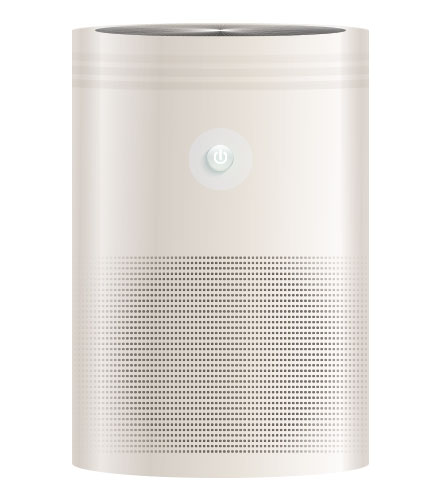
The short answer is yes.
The long answer is more complicated, but still yes. Air filters can do a fantastic job removing physical particles from the air, which can make devices like these an easy fix for environments that are high in pollen, dust, mold, or other airborne contaminants.
However, it’s worth noting what air filters can and can’t do.
Air filters are excellent at removing physical particles, like the aforementioned pollen and dust.
Air filters are not good at removing gases or aerosolized particles like paint fumes, thinners, or similar issues.
Using an air purifier is also an ongoing process. If the air in a room is constantly cycling, for example, through an open window, then the purifier will also need to be on.
Understanding air filter terminology
Filtration
All good air purifiers will be equipped with a High-Efficiency Particulate Air (HEPA) filter.
To qualify as a HEPA filter, a product has to fit certain specifications, specifically, it has to be able to filter out at least 99.7% of particles from the air that are at least 0.3 microns in size. (That’s smaller than most bacteria.)
Air filters are good for multiple uses, including:
- Parents with young children
- Owners of pets
- People who smoke
- Asthma sufferers or anyone with breathing difficulties
Other options for air filtration include;
Airflow and room size
The effectiveness of a filter can be measured using two metrics, airflow, and room size.
The airflow of an air filter is generally measured in cubic meters per hour. This tells you how much air a particular filter will actually filter over the course of one hour, and can give you a rough idea of how quickly a specific filter can clean a room’s air.
The second metric is how big a room each particular filter can comfortably service.
Air filtration is an imprecise science at the best of times, so you’re likely to see this expressed as a range of areas, normally measured in square footage.
It’s also worth noting that this figure can vary wildly based on airflow and particulates. If you live in a high pollen area, or right next to a motorway, any filter is not going to be as efficient and won’t effectively service a full-sized room at its highest rating.
Finally, air filters tend to become less efficient over time, as the filtration mechanisms degrade, getting clogged with dust and other particles.
Bear this in mind when making your purchase, and if possible, always buy up. An air purifier that’s designed for rooms larger than the one it will be placed in means that it will struggle less, and last far longer overall, with much greater efficiency.
Overall costs and running costs
Air filters can be reasonably expensive as an initial purchase, but the upside is that once you’ve spent that initial outlay, running costs are usually quite low.
There are two running costs for an air filter. Electricity, and filtration.
Electricity is simple. Most air purifiers run on mains power, but even the big ones are relatively low wattage. Expect a large air purifier to sit somewhere between 40 and 60 watts, so will cost about as much as a fan to run.
Filtration costs can be more expensive but tend to be an incidental expense. Essentially, the filters in your air purifier will need to be changed to keep them at peak effectiveness, and they can be quite expensive.
But air filters can and do last hundreds of hours on average, so it’s easy to assess how much you’re going to spend on filters, based on your personal usage.
Extra
There are a few more minor considerations when it comes to air filters.
First off, sound. How loud is it? Does it get louder if the air is particularly bad quality? Can you comfortably sleep next to it?
Second controls. Can you easily change settings? Does it have an automatic function or a timer? What about app control?

